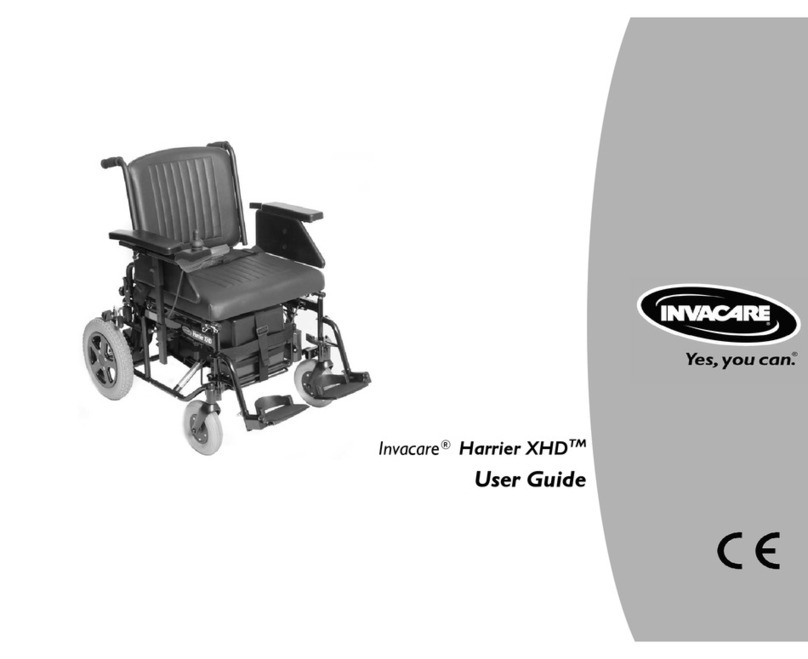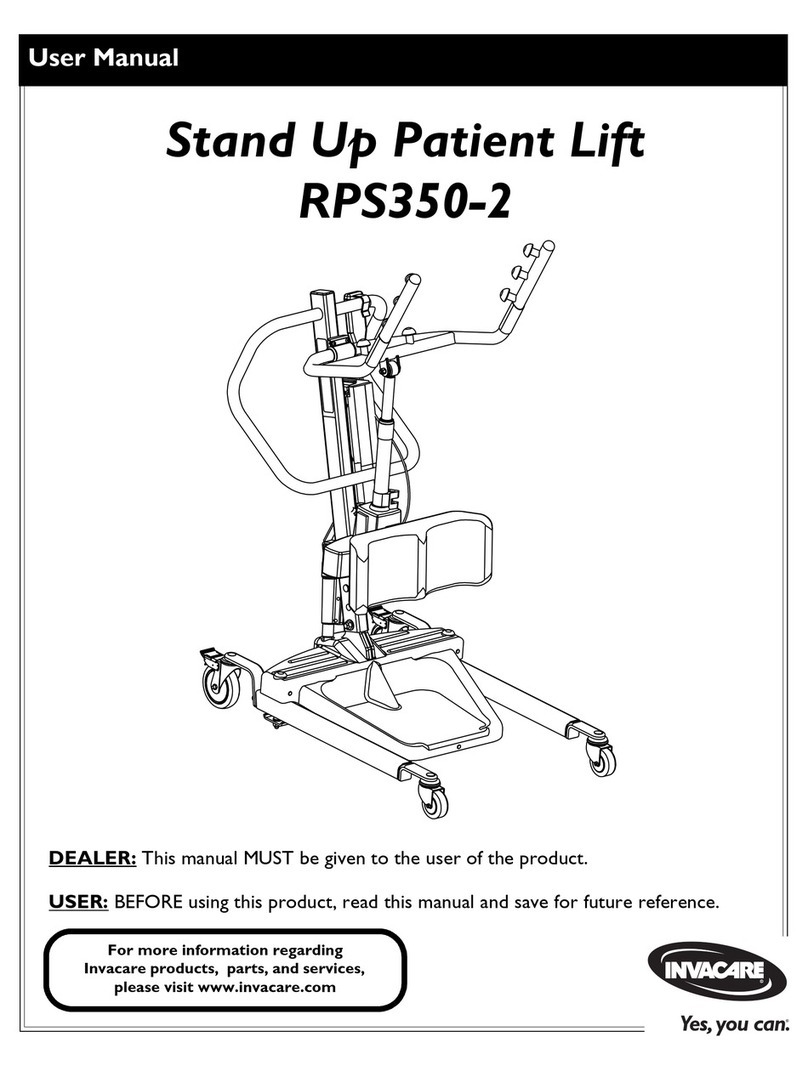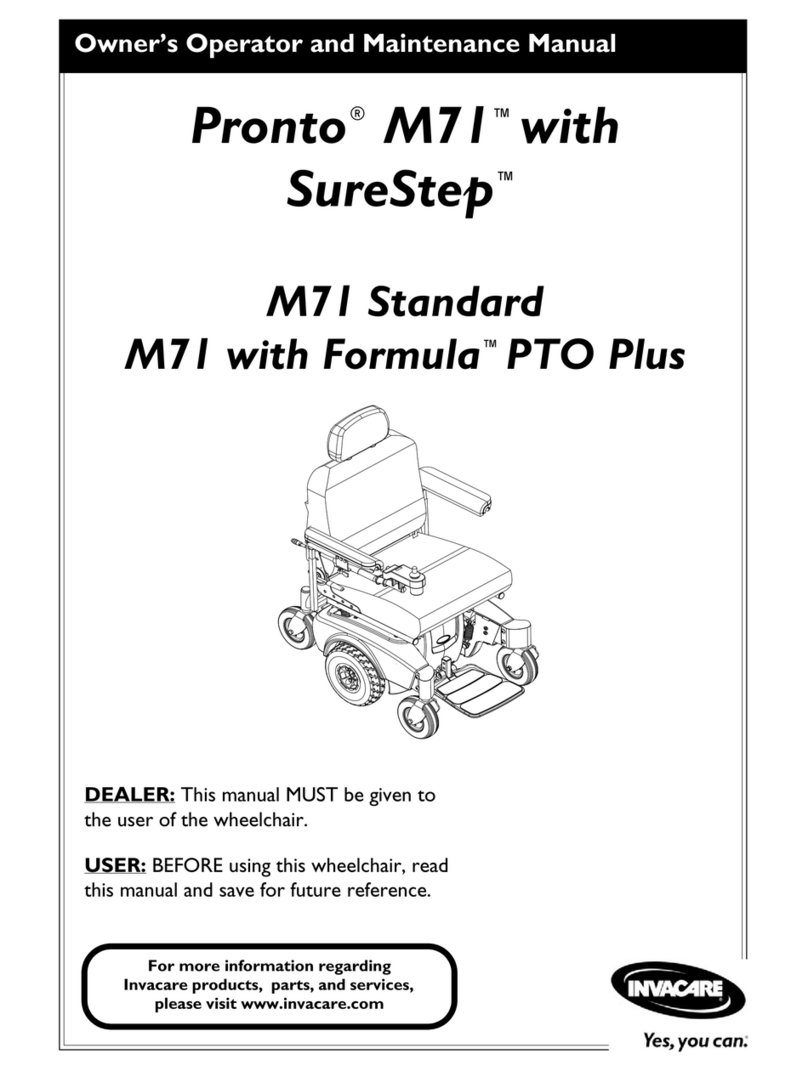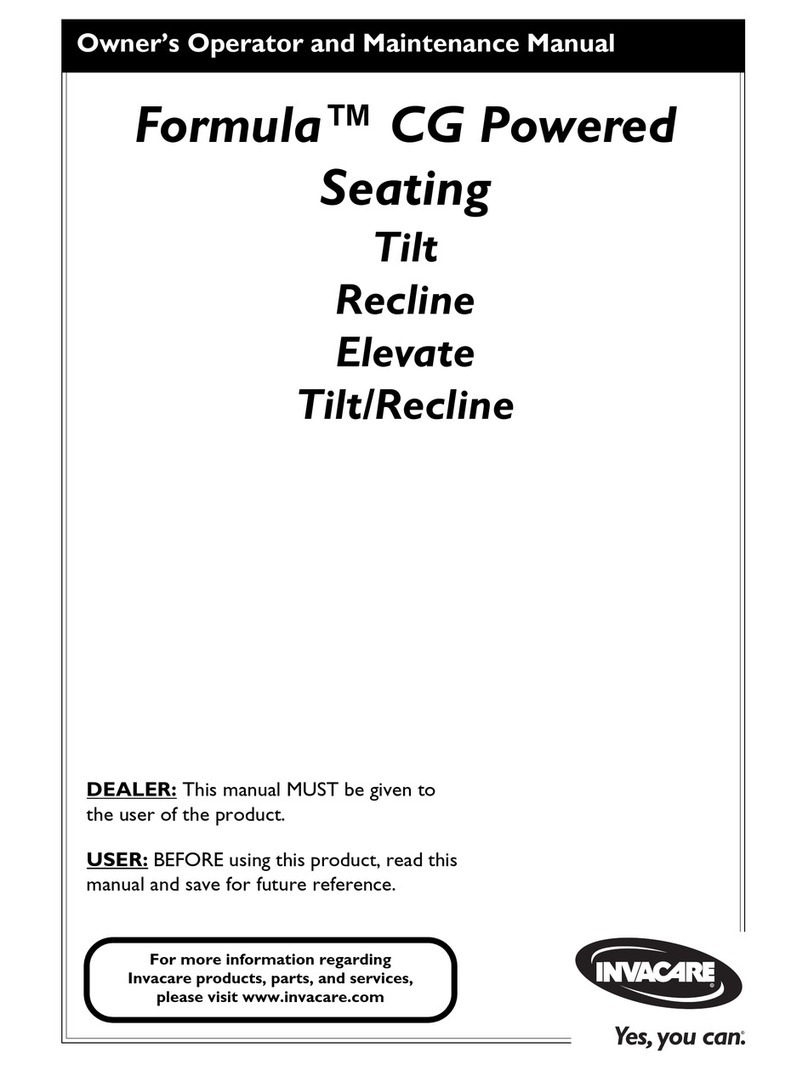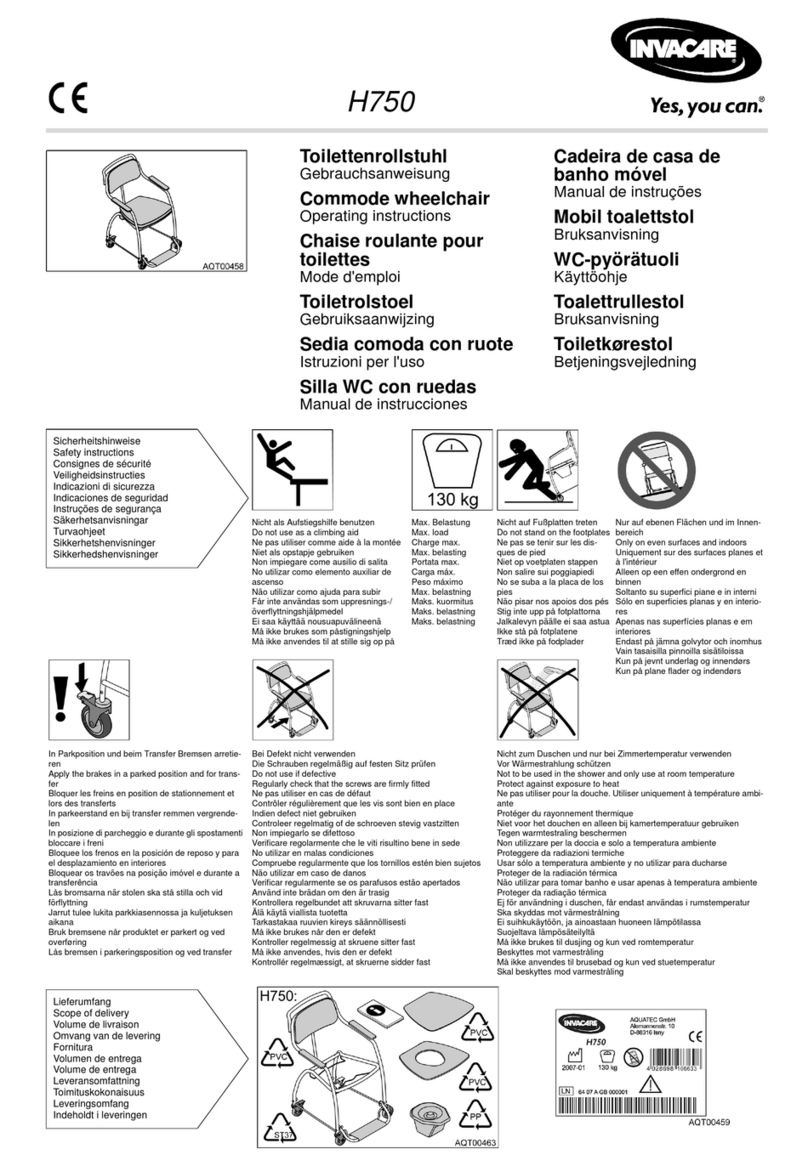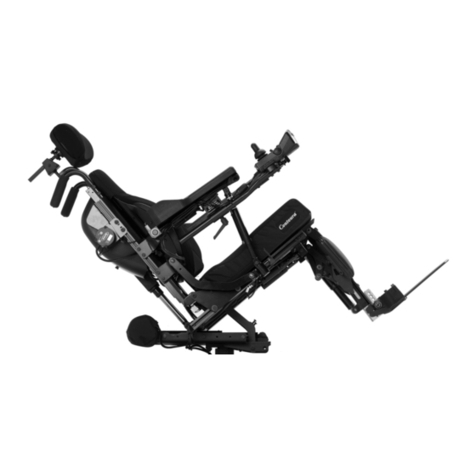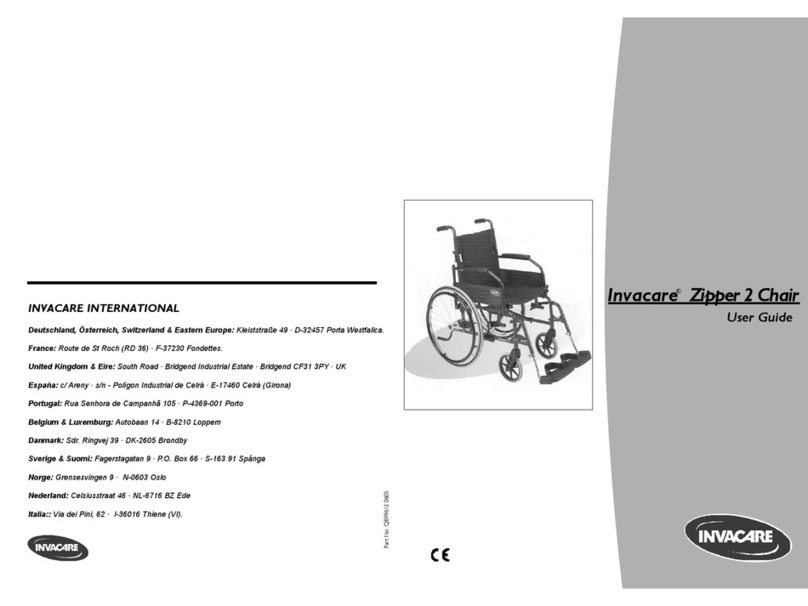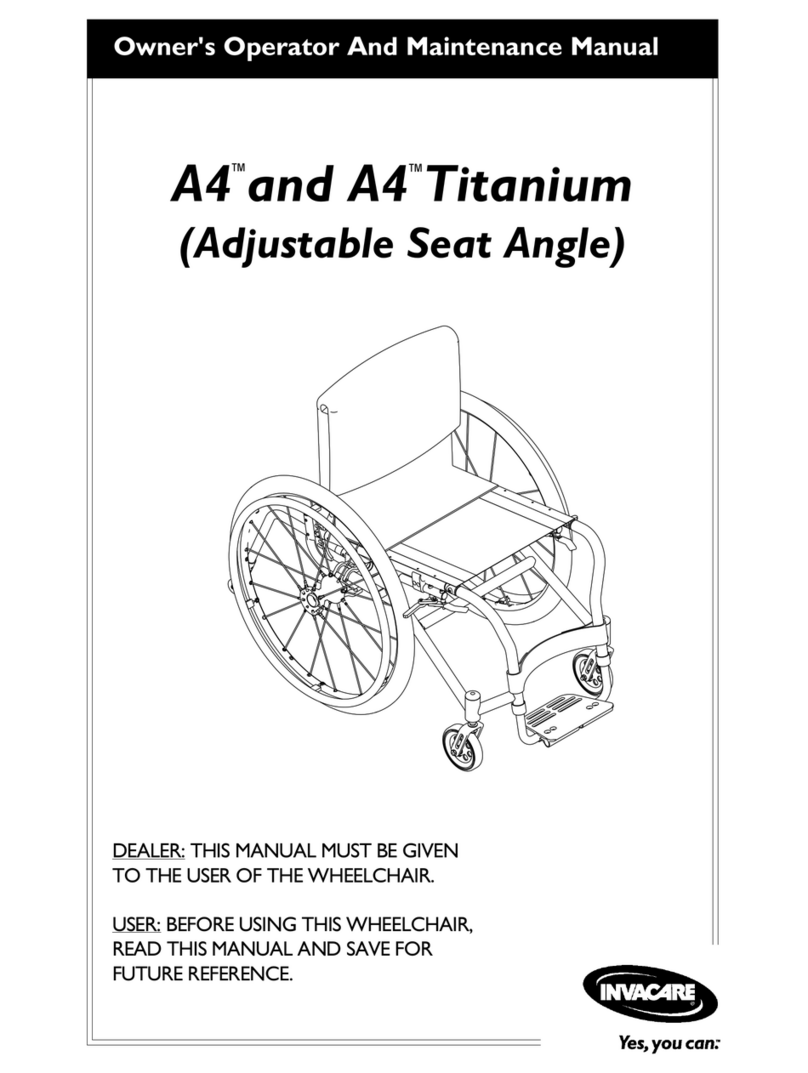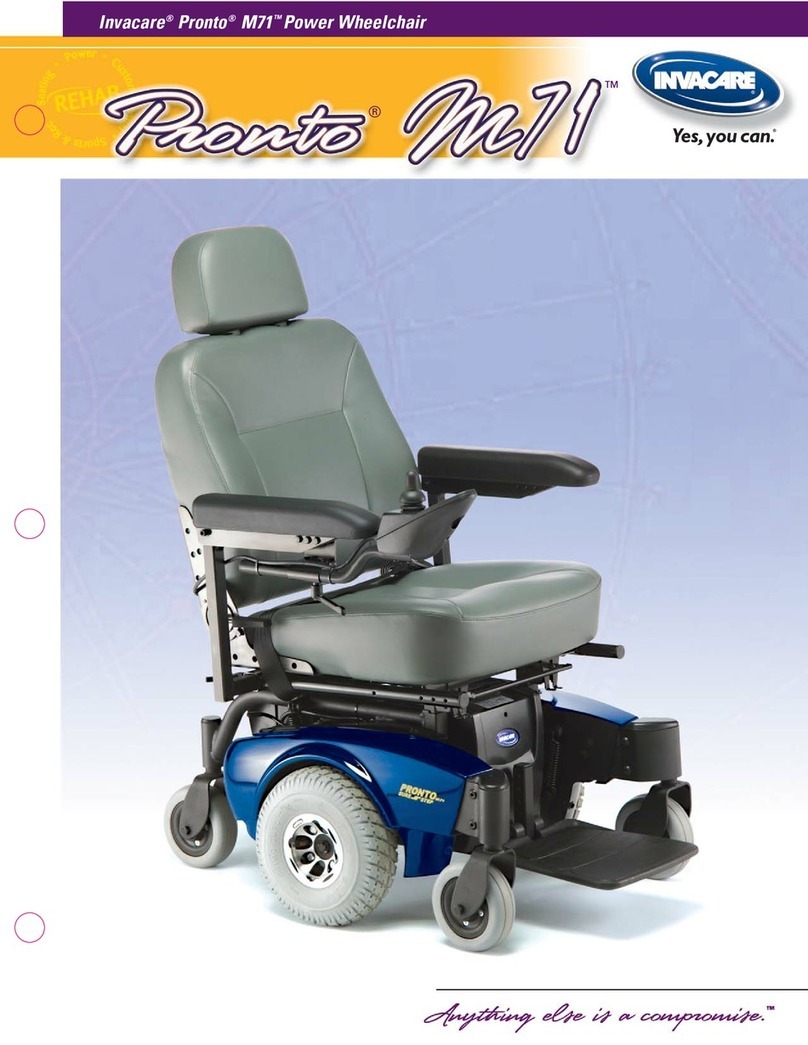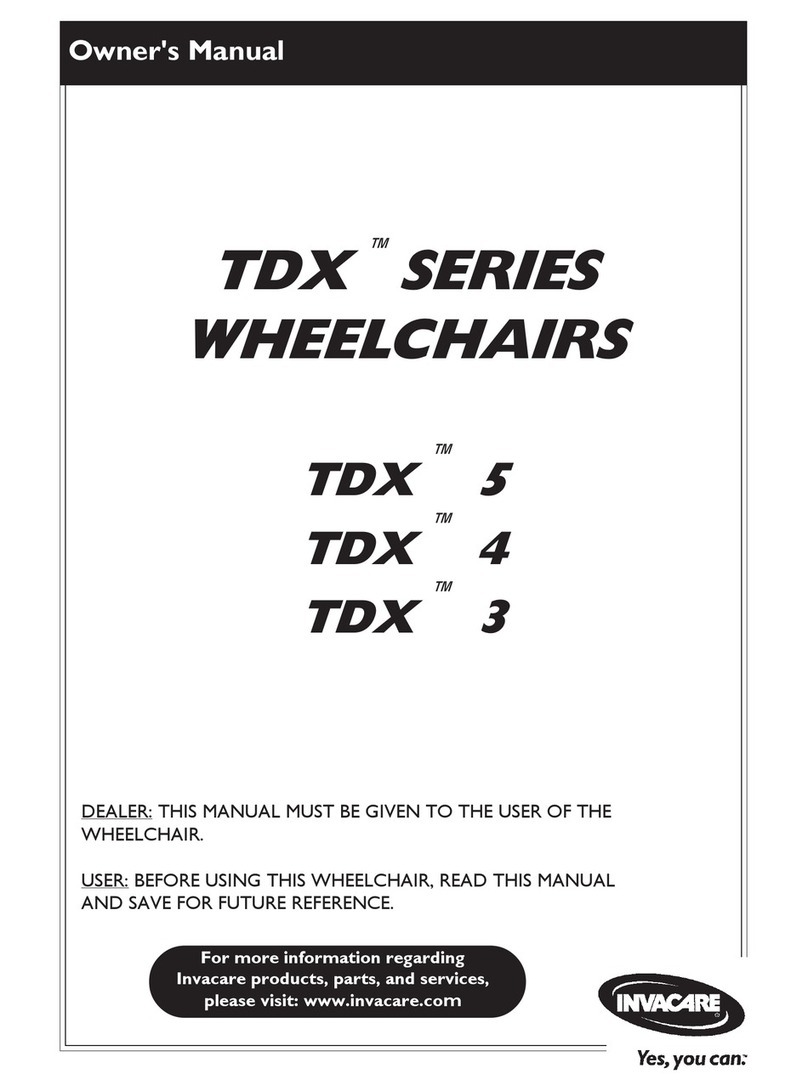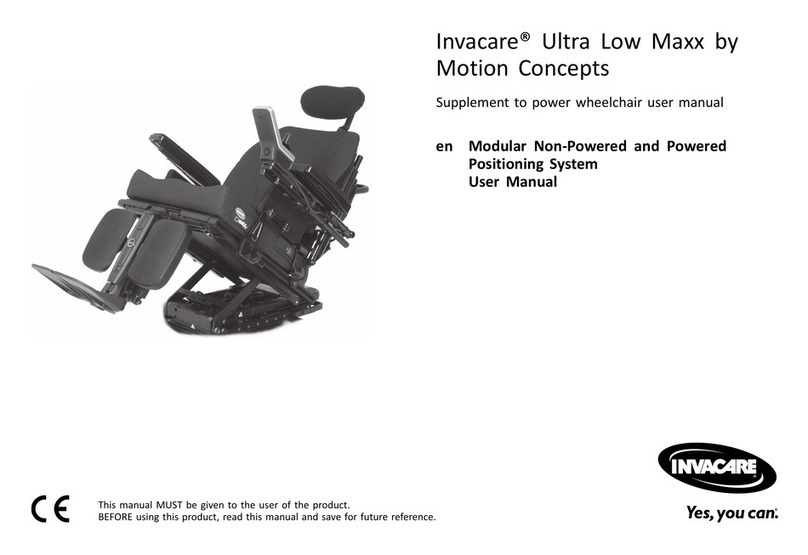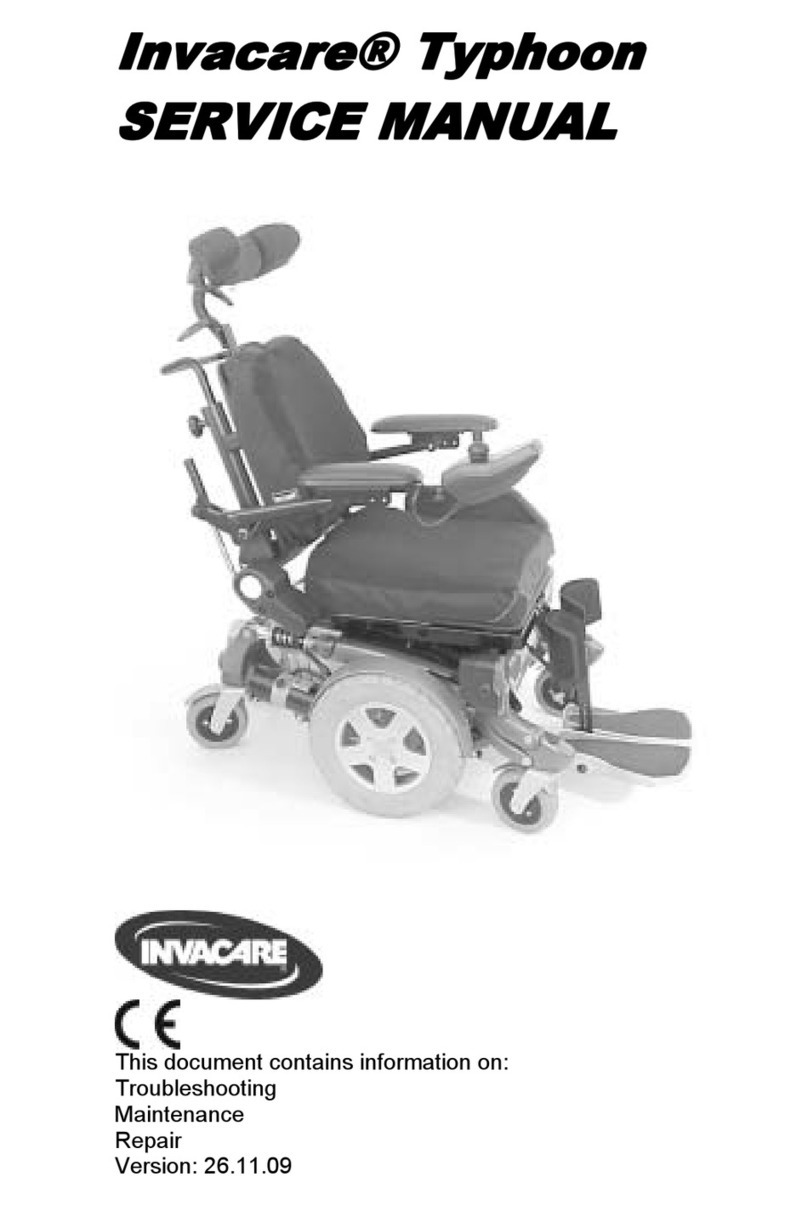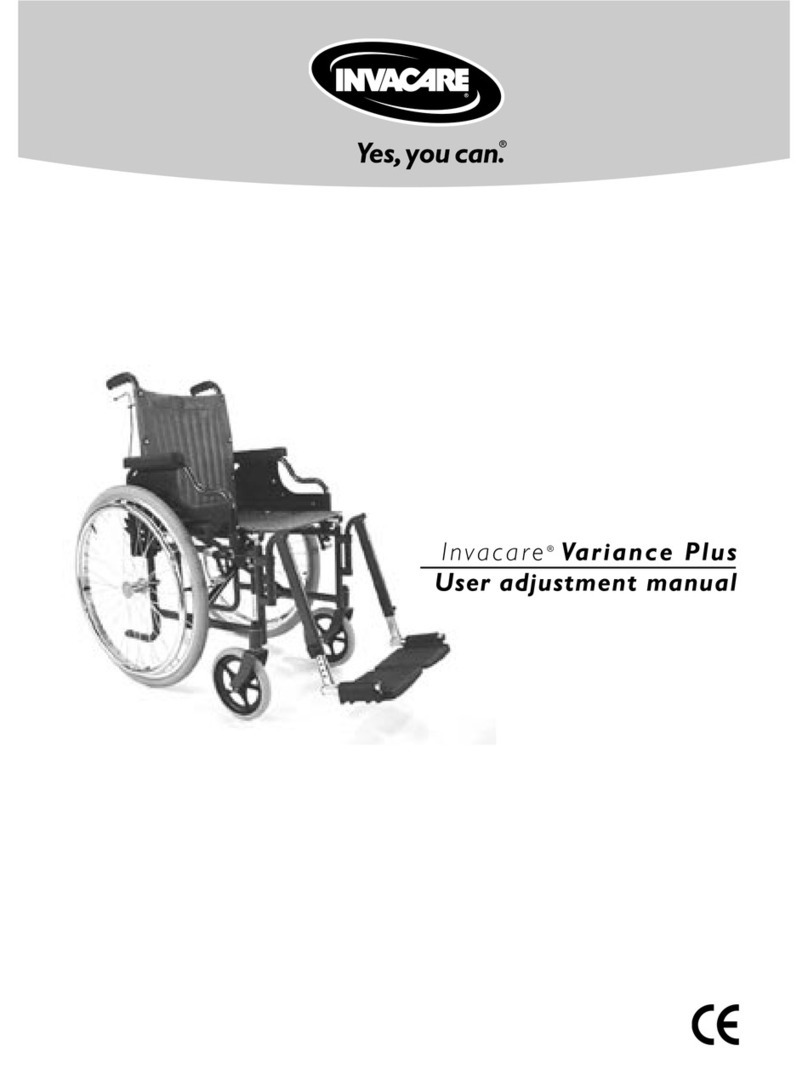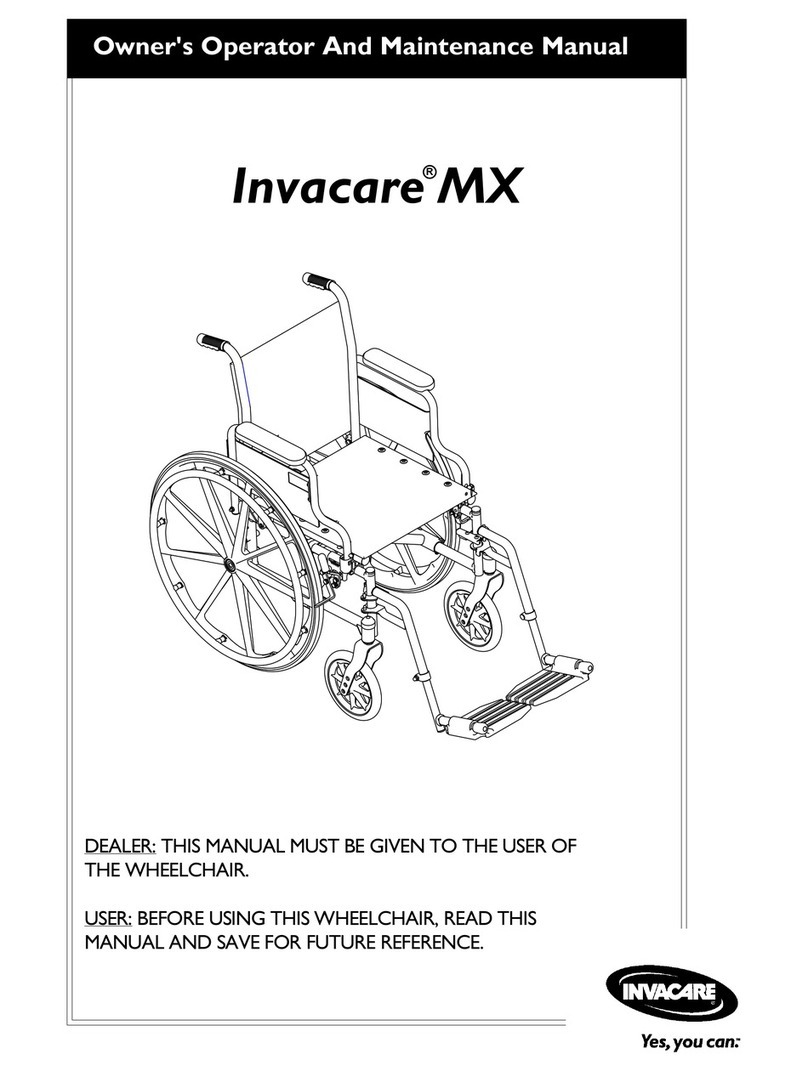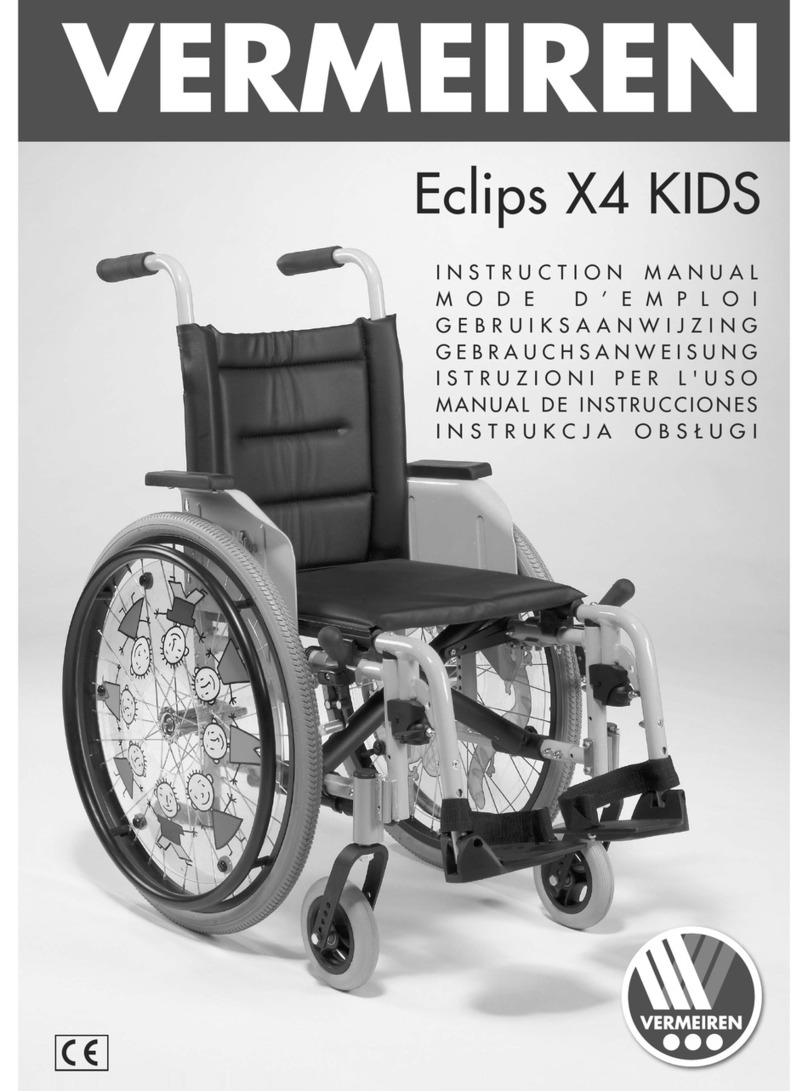
Power Tilt Only For M71 And M91. 4Part No.1118362 Rev A
SPECIAL NOTES
WARNING/CAUTION notices as used in this manual appl to hazards or
unsafe practices which could result in personal injur or propert damage.
NOTICE
THE INFORMATION CONTAINED IN THIS DOCUMENT IS SUBJECT
TO CHANGE WITHOUT NOTICE.
As a manufacturer of wheelchairs, Invacare endeavors to suppl a wide variet
of wheelchairs to meet man needs of the end user. However, final selection of
the t pe of wheelchair to be used b an individual rests solel with the user and
his/her healthcare professional capable of making such a selection.
WHEELCHAIR TIE-DOWN RESTRAINTS AND SEAT POSITIONING
STRAPS
Invacare recommends that wheelchair users NOT be transported in vehicles
of an kind while in wheelchairs. As of this date, the Department of
Transportation has not approved an tie-down s stems for transportation of a
user while in a wheelchair, in a moving vehicle of an t pe.
It is Invacares position that users of wheelchairs should be transferred into
appropriate seating in vehicles for transportation and use be made of the
restraints made available b the auto industr . Invacare cannot and does not
recommend an wheelchair transportation s stems.
WARNING
THIS SEATING SYSTEM HAS BEEN CUSTOM DESIGNED AND WILL BE
ASSEMBLED TO THE WHEELCHAIR BASE BEFORE DELIVERY TO THE
USER. THE INFORMATION CONTAINED IN THIS MANUAL IS FOR
MAINTAINING AND ADJUSTING THE SEATING SYSTEM. THERE ARE
VERY FEW ADJUSTMENTS THAT CAN SAFELY BE MADE BY THE
USER. IF THERE IS A PROCEDURE OR ADJUSTMENT THAT NEEDS TO
BE PERFORMED ON THE SEATING SYSTEM THAT IS NOT IN THIS
MANUAL, DO NOT PERFORM THAT PROCEDURE. HAVE THE
SEATING SYSTEM SERVICED BY A QUALIFIED TECHNICIAN.
The drive behavior initiall experienced b the user ma be different from
other chairs previousl used. This Power Wheelchair has Invacares Sure Step
technolog , a feature that provides the chair with optimum traction and
stabilit when driving forward over transitions and thresholds of up to 2-inches
for the M71 and 3-inches for the M91. The following warnings appl specificall
to the Sure Step Feature.
lDo not use on inclines greater than 9o.
lDo not use on inclines with wet, slippery, icy or oily surfaces. This may
include certain painted or otherwise treated wood surfaces.
lDo not traverse down ramps at high speed. Doing so will reduce traction
and increase stopping distance.
lThe end users weight can materiall affect traction on sloped surfaces.
Great care should be taken when traversing such slopes.
To determine and establish our particular safet limits, practice use of this
product on various sloping surfaces in the presence of a qualified healthcare
provider BEFORE attempting active use of this wheelchair. Other general
warnings listed within this document also appl .
SPECIAL NOTES
SPECIAL NOTES
